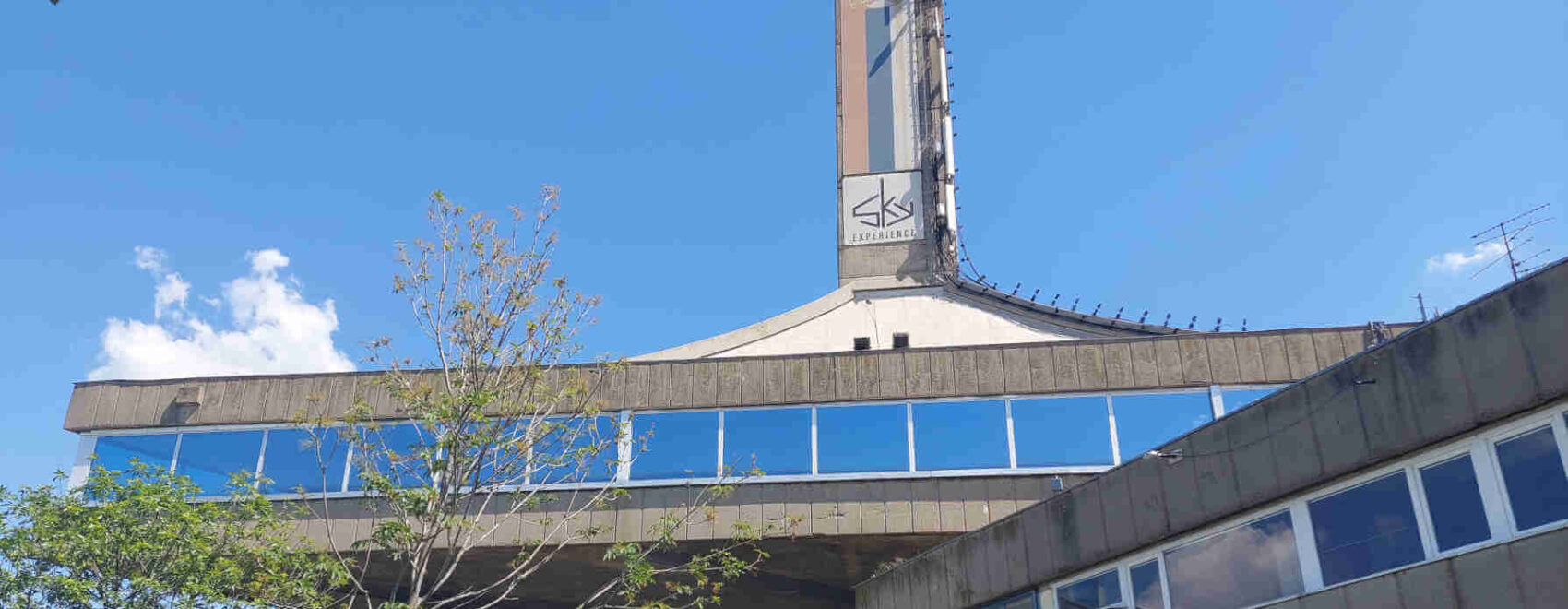Standing proudly along Belgrade’s picturesque 25th May promenade, overlooking the Danube River, stands a remarkable architectural wonder: the Danube Flower. This unique building, showcasing the distinct characteristics of brutalist architecture, has continued to impress passers-by for over fifty years since its construction. Originally opening as a prestigious restaurant during the communist era, it welcomed its first guest, Josip Broz Tito, and has since been repurposed into a high-end gym.
Table of Contents

Tito’s Vision: The 25th May Complex
In the 1970s, President of Yugoslavia Josip Broz Tito initiated a groundbreaking project to rejuvenate Belgrade’s Dorćol neighborhood. At that time, Dorćol lacked promenades, cycling paths, or buildings, and Tito envisioned transforming it into a vibrant recreational hub. Central to this visionary initiative was the construction of a grand sports center, initially exclusive to high-profile guests, with the iconic Danube Flower restaurant as an integral part of the complex.
President Josip Broz personally inaugurated the 25th May Sports Center, injecting new life into Dorćol and extending the city’s dynamic atmosphere along the Danube River. This marked a significant turning point for Belgrade, as the neighborhood’s appeal grew, drawing more residents and gradually reshaping its demographic landscape. The entire area, known as 25th May, was a tribute to Tito, as the day celebrated his birthday in Yugoslavia (although his actual birthday was May 7). Today, the promenade is known as 25th May, while the sports complex has been renamed Milan Gale Muškatirović, honoring the legacy of a Serbian water polo player.

The construction of the sports center brought about a remarkable transformation of the once-desolate area, introducing essential infrastructure improvements such as riverbank development, a promenade, and cycling paths. This period also witnessed the rise of a thriving swimming and water polo culture.
Elite History of the Danube Flower
Perched atop the sports center, the renowned Danube Flower restaurant initially catered to a select few. It became a favored destination for Tito, top officials, and famous singers. In fact, Tito himself was the restaurant’s inaugural guest, visiting on November 22, 1973. It was a renowned gathering place until its decline in the nineties, culminating in its closure coinciding with the onset of the country’s civil war. For fifteen years, the building remained inactive and significantly deteriorated.

After a period of neglect and closure during the tumultuous nineties, the Danube Flower has been revitalized to serve a new purpose. Today, it houses a high-end gym, offering patrons a stunning view of the surrounding nature. Exercise enthusiasts can immerse themselves in the tranquil river scenery, often dotted with graceful swans. Near the elevator on the ground floor, a board detailing the building’s history proudly mentions Tito as the restaurant’s inaugural guest, providing visitors with a glimpse into its prestigious past.

Architectural Marvel: The Unique Design of the Danube Flower
What sets the Danube Flower apart is its ingenious architectural design. The triangular-shaped main structure, soaring fifteen meters above the river, appears to levitate effortlessly, supported by a central core housing elevators and a double spiral staircase. The building’s cantilevers extend twelve meters, creating a sense of weightlessness and grace.

One of the most striking features of the Danube Flower is its seamless integration of exterior and interior spaces. The concrete floor-slab and ceiling shell are intentionally left unconnected at the perimeter, allowing for a continuous glass facade that wraps around the building for 150 meters. This design choice offers sweeping panoramic views of the Danube River, inviting nature into the interior space.
Conclusion
The Danube Flower stands as a striking example of Belgrade brutalism, showcasing the bold and innovative architectural style that characterized the city’s development during the 20th century. Its unique design elements, such as the levitating triangular structure and seamless integration of interior and exterior spaces, not only highlight the ingenuity of its creators but also serve as a reminder of Belgrade’s architectural heritage. As a prominent landmark along the Danube River, the Danube Flower continues to fascinate and inspire, inviting visitors to appreciate the beauty and complexity of brutalist architecture in Serbia.


Leave a Reply